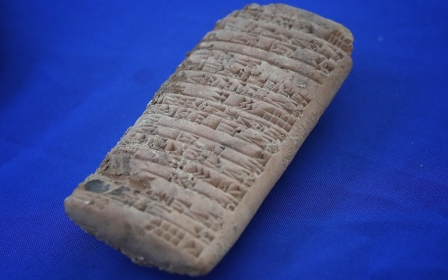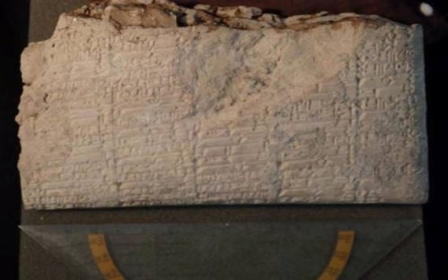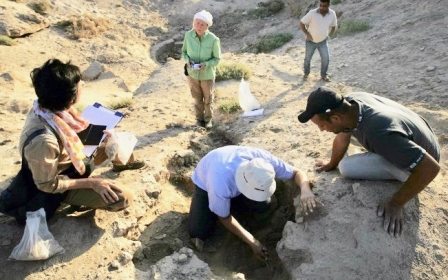Ancient sculpture put up for sale in UK to be returned to Iraq

An ancient sculpture secretly smuggled out of Iraq and put up for sale in the UK is set to be repatriated after a police seizure.
The Sumerian temple plaque, dating from about 2,4000 BC was offered for sale as a “western Asiatic Akkadian tablet”in May 2019 by Timeline auctions, an online auctioneer, which claimed it had come from a private collection, the Guardian reported on Sunday.
The advertisement was spotted by the British Museum which quickly concluded the date, description and provenance were incorrect and informed the police.
“It’s Sumerian, not Akkadian, and definitely not a tablet. They also assumed it was 200 years later,” Dr St John Simpson, the British Museum’s senior curator told the Guardian.
The plaque was actually a votive wall plaque from an ancient Sumerian temple in what is now southern Iraq. The limestone artefact depicts a large seated male figure in a Sumerian form of skirt, known as a kuanakes.
New MEE newsletter: Jerusalem Dispatch
Sign up to get the latest insights and analysis on Israel-Palestine, alongside Turkey Unpacked and other MEE newsletters
“We’re used to coming across tablets, pots, metalwork, seals and figurines on the art market or in seizures that have been trafficked. But it’s really exceptional to see something of this quality,” Simpson added.
“There are only about 50 examples of these known from ancient Mesopotamia. So that immediately places it on the high-rarity scale. We can be fairly sure that this object comes from the Sumerian heartland. That is the area that got very badly looted between the 1990s and 2003.”
The illicit looting of archaeological sites and the smuggling of artefacts has followed periods of upheaval in Iraq.
Large scale looting of museums and sites followed the 2003 US-led intervention. After seizing large swathes of Iraq in 2014, the Islamic State group infamously released footage of militants defacing priceless artefacts with sledgehammers and toppling statues that had survived for thousands of years.
Still, the group is thought to have made considerable sums from the sale of artefacts which were consequently smuggled into Europe.
Trafficked items have been returned to Iraq over the years, but officials in the country told MEE last year that thefts were still going on at unguarded locations.
In a statement to the Guardian, Mohammad Jaafar al-Sadr, Iraq’s ambassador to the UK, thanked the British Museum. “We extend our gratitude to the British Museum staff for their efforts and cooperation with us.”
Meanwhile, Christopher Wren of TimeLine Auctions said the company was not aware that the artefact had been looted.
“The piece is not documented as having been looted and is not listed on any database, so it did not show on the checks with the Art Loss Register and other sources undertaken by us.”
Were it to be sold on the legitimate market, the sculpture would fetch tens of thousands of pounds.
The British Museum is the UK’s main advisory body on matters to do with the illicit trafficking of antiquities. Last July, it oversaw the return of more than 150 looted ancient artefacts recovered by UK law enforcement to institutions in Iraq and Afghanistan.
Home to the Rosetta Stone, the Elgin Marbles and the Cyrus Cylinder among other treasures of world heritage, the British Museum has itself faced calls to return artefacts many argue were stolen during Britain's colonial era.
Middle East Eye delivers independent and unrivalled coverage and analysis of the Middle East, North Africa and beyond. To learn more about republishing this content and the associated fees, please fill out this form. More about MEE can be found here.




